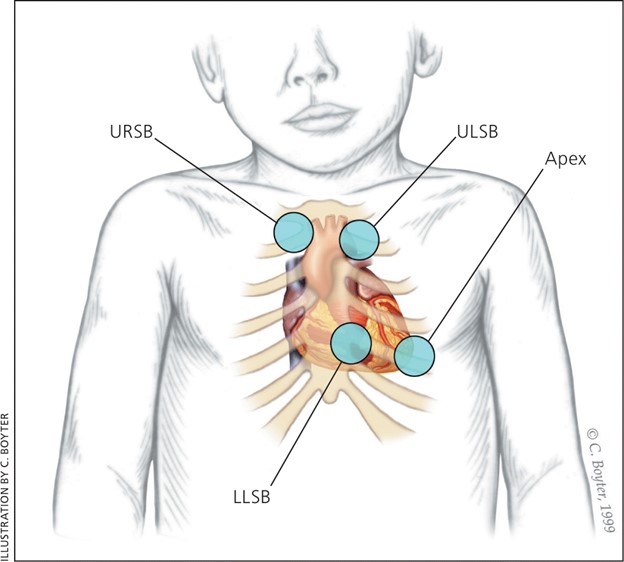Which of the following assessments is the priority for a toddler who is diagnosed with fetal alcohol syndrome?
Small head size.
Poor coordination.
Speech and language delays.
Heart murmur.
The Correct Answer is D
A heart murmur is a priority assessment for a toddler who is diagnosed with fetal alcohol syndrome because it may indicate a congenital heart defect, which can affect the child’s growth, development and oxygenation. According to the health search results, fetal alcohol syndrome can cause heart and kidney problems, among other complications.

Choice A is wrong because small head size is a common feature of fetal alcohol syndrome, but it is not a priority assessment. It indicates that the child has microcephaly, which is associated with intellectual and learning disabilities.
Choice B is wrong because poor coordination is another common feature of fetal alcohol syndrome, but it is not a priority assessment. It indicates that the child has problems with motor skills and balance.
Choice C is wrong because speech and language delays are also common features of fetal alcohol syndrome, but they are not a priority assessment. They indicate that the child has problems with communication and social skills.
Nursing Test Bank
Naxlex Comprehensive Predictor Exams
Related Questions
Correct Answer is B
Explanation
The nurse should make the statement “The client has hypoxemia after 10 minutes on a rebreather mask.” first. This is because SBAR (Situation- Background-Assessment-Recommendation) is a communication tool that helps provide essential, concise information, usually during crucial situations. The first component of SBAR is Situation, which is a concise statement of the problem.
The nurse should state the most urgent and relevant problem first, which is the client’s hypoxemia.
Choice A is wrong because it is not a clear statement of the situation.
It is vague and does not provide specific information about the client’s condition or vital signs.
It also expresses the nurse’s feeling rather than an objective assessment.
Choice C is wrong because it is part of the Assessment component of SBAR, not the Situation.
It provides numerical data about the client’s blood gas analysis, but it does not state the problem or the reason for calling the healthcare provider.
Choice D is wrong because it is part of the Background component of SBAR, not the Situation.
It provides pertinent and brief information related to the situation, such as the client’s medical history and diagnosis, but it does not state the current problem or concern.
Normal ranges for blood gas analysis are:
- PaO2: 80-100 mmHg
- PaCO2: 35-45 mmHg
- HCO3: 22-26 mEq/L
Hypoxemia is defined as a low level of oxygen in the blood, usually below 60 mmHg.
Correct Answer is B
Explanation
To explain why, we need to use the formula for calculating the drip rate in drops per minute (dpm):
Volume of IV fluid (mL) x Drop Factor (drops/mL) / Time to run (h) x 60 (min/h) = Drip Rate (dpm)
In this question, the volume of IV fluid is one liter, which is equivalent to 1000 mL. The drop factor is 15 drops per mL, as given by the tubing.
The time to run is six hours, as ordered by the physician. Plugging these values into the formula, we get:
1000 mL x 15 drops/mL / 6 h x 60 min/h = 84 dpm
Therefore, the nurse should regulate the infusion to deliver 84 drops per minute.
Choice A is wrong because it gives a drip rate of 42 drops per minute, which is half of the correct answer.
This would result in delivering only 500 mL of normal saline in six hours, instead of one liter.
Choice C is wrong because it gives a drip rate of 100 drops per minute, which is more than the correct answer.
This would result in delivering 1.43 liters of normal saline in six hours, instead of one liter.
Choice D is wrong because it gives a drip rate of 166 drops per minute, which is almost double the correct answer.
This would result in delivering 1.99 liters of normal saline in six hours, instead of one liter.
Normal saline is a solution of 0.9% sodium chloride in water, which has the same osmolarity as blood plasma.
It is used to treat dehydration, shock, blood loss, and other conditions that require fluid replacement.
The normal range of sodium in blood is 135-145 mEq/L.
Whether you are a student looking to ace your exams or a practicing nurse seeking to enhance your expertise , our nursing education contents will empower you with the confidence and competence to make a difference in the lives of patients and become a respected leader in the healthcare field.
Visit Naxlex, invest in your future and unlock endless possibilities with our unparalleled nursing education contents today
Report Wrong Answer on the Current Question
Do you disagree with the answer? If yes, what is your expected answer? Explain.
Kindly be descriptive with the issue you are facing.
